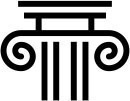Have you ever noticed how many universities have Christian mottos?
There’s Princeton’s "Under God’s power she flourishes" and Oxford’s "The Lord is my light." Closer to home we have Brandon University’s "Speaking the truth in love" and Dalhousie’s "Pray and work."
But for most professors and students on these campuses today, such mottos are historical curiosities at best and offensive anachronisms at worst. Mainly they are ignored.
What explains this strange mismatch between mottos and reality?
Universities first emerged in Western Europe in places like Bologna (Italy), Salamanca (Spain), Oxford, Cambridge and Paris in the 11th to 13th centuries.
Medieval universities were unabashedly Christian institutions. Largely independent of the church hierarchy, they taught and studied within a Christian frame of reference that took for granted the authority of divine revelation and truth of Christianity. In addition to their main function of training lawyers, doctors, theologians and learned men who could serve in the courts of kings and princes, universities were the centres of advanced theological thinking. Their purpose was to maintain and work out the implications of a Christian tradition of doctrine and learning, and pass it on to the next generation.
Universities also played a central role in the Reformation. Martin Luther was a professor of moral theology at the University of Wittenberg and his famous Ninety-Five Theses were written as part of a tradition of formal academic debate. In the early modern era, universities became firmly rooted in the various theological traditions that crystallized after the Reformation (Catholic, Lutheran, Anglican and Reformed).

When European settlers and their descendants founded colleges around the world, including in Canada, they stood in this tradition of Christian learning. Saint Mary’s University in Halifax was founded by the Catholic Church in 1802, the Anglican University of Toronto in 1827, the Presbyterian Queen’s University in 1841 and so on.
Things started to change in the 18th century with an intellectual movement called the Enlightenment whose radical wing claimed human reason was superior to the Bible and church tradition. At first this movement had little to do with universities. Then, in Germany in the late 18th and early 19th centuries, a few rationalist professors found allies among ambitious rulers and convinced them that granting professors freedom from religious orthodoxy would bring practical benefits – like attracting prominent scholars and providing the most advanced training for civil servants. This faculty-state alliance gradually steered German universities in a secular direction. Meanwhile the French Revolution (1789–1799), heavily influenced by radical Enlightenment ideals, suddenly abolished the old Christian university system in France and replaced it with a fully secular, state-controlled system.

German and French models were imitated all over Europe, but English-speaking universities kept their Christian character well into the 19th and even 20th centuries. Oxford and Cambridge remained strictly Anglican institutions until the 1850s when parliament forced them to accept non-Anglican students and began abolishing the remaining religious requirements. But it was not until the early decades of the 20th century that the atmosphere of these ancient universities became predominantly secular.
In English Canada and the United States, most universities were solidly evangelical Protestant or Catholic until the closing decades of the 19th century when religiously liberal faculty influenced by British and German trends introduced unorthodox and rationalist ideas. According to historians like George Marsden and George Rawlyk, eventually a new generation of secular-minded leaders and professors pushed even liberal religion to the sidelines. In English Canada most formerly Christian institutions gave up their religious identity between the 1920s and ’50s in return for government funding.
This history helps explain why, when a group of Christians trying to start my own institution, Redeemer University in the 1970s, a government official reportedly told them the idea of a Christian university was a contradiction in terms.
He didn’t know universities had been Christian institutions longer than they’d been secular ones. But he was correct that by the 1970s in Canada the idea of a Christian university – and those old mottos – seemed strange indeed.
Kevin Flatt is professor of history at Redeemer University in Ancaster, Ont. Read more at www.FaithToday.ca/HistoryLesson.